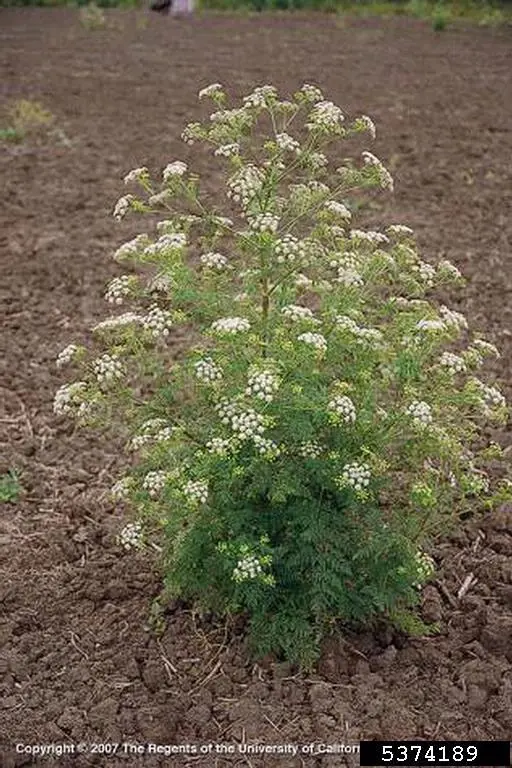X
CONTACT US
Great Lakes Center, SAMC 319
SUNY Buffalo State
1300 Elmwood Ave., Buffalo, NY 14222
wnyprism@buffalostate.edu
(716) 878.4708
SUBSCRIBE TO LISTSERV
FOLLOW US
CONTACT

Adult poison hemlock plant. Photo credit: Joseph M. DiTomaso, University of California - Davis, Bugwood.org
Poison Hemlock
COMMON NAME:
Poison HemlockSCIENTIFIC NAME:
Conium maculatumORIGIN:
EuropeDESCRIPTION:
Poison hemlock is biennial herbaceous plant that forms a rosette in the first year and grows a tall flower stalk in the second. Its fern-like leaves are at least 2 feet long and pinnately compound. White flowers, in umbels 3-6 inches long, bloom from May to August. The stem is hairless, hollow and mottled with purple (In comparison, giant hogweed stems have coarse hairs).HABITAT:
Poison hemlock thrives in disturbed areas such as roadsides, ditches, stream banks, and pastures. It can also be found in wetlands and riparian forests.THREAT:
Poison hemlock produces massive amounts of seed and crowds out native vegetation. It also emerges in early spring, making it more appealing to wildlife and livestock. Ingestion of poison hemlock can be fatal for livestock and humans. Symptoms of poisoning include nervousness, trembling, ataxia, dilation of the pupils, a weak and slow heartbeat, and coma. Symptoms generally begin within an hour of ingestion.MANAGEMENT:
CAUTION: Poison hemlock is extremely toxic to humans. When working with poison hemlock, wear Personal Protective Equipment (PPE) to limit accidental ingestion.
Plant removal can be achieved through mowing, hand removal, or herbicide application. Management should take place before flowering to limit seed production and spread. Treatments need to be repeated for several years until the seed bank is depleted. Establishing vegetation, such as native grasses, in the treatment area reduces likelihood of re-infestation. Since poison hemlock is so easily spread by seed and mowing, care must be taken to use spread prevention practices when mowing.
WNY PRISM PRIORITY:
Tier 3 - Containment
NYS Invasive Species Tiers Chart - Tier Definitions
ADDITIONAL RESOURCES:
Native Alternatives
Great angelica (Angelica atropurpurea)
Warm season grasses
NYS Prohibited and Regulated Species - Part 575:
PATHWAYS OF INVASION:
Poison hemlock was introduced to North America as an ornamental plant. It produces numerous seeds which can be spread through mowing and transport on footwear, clothing, and equipment.
REGIONAL DISTRIBUTION:
Locally Common

